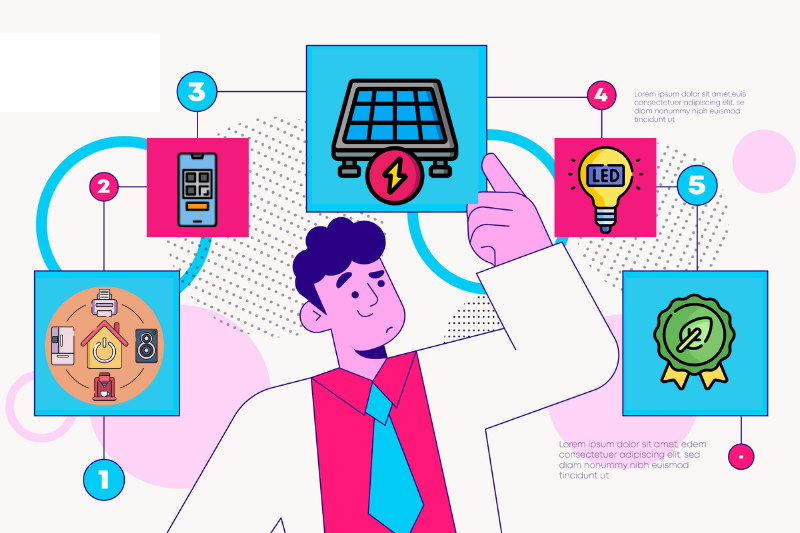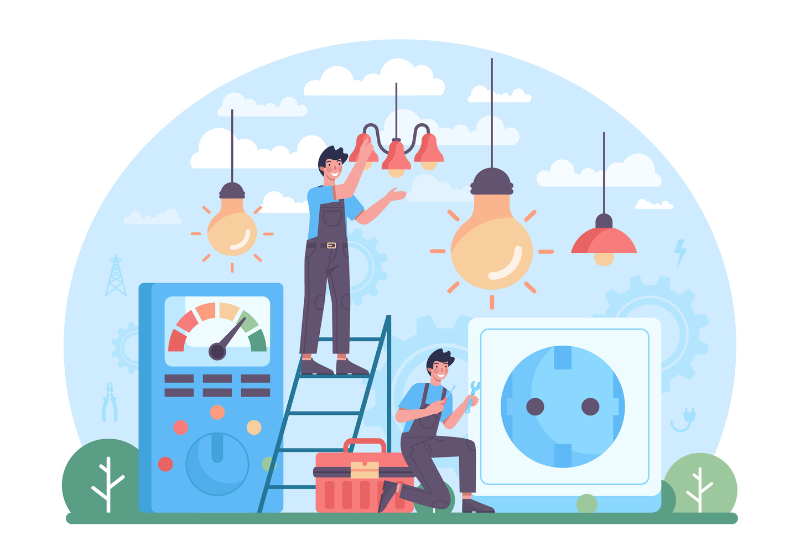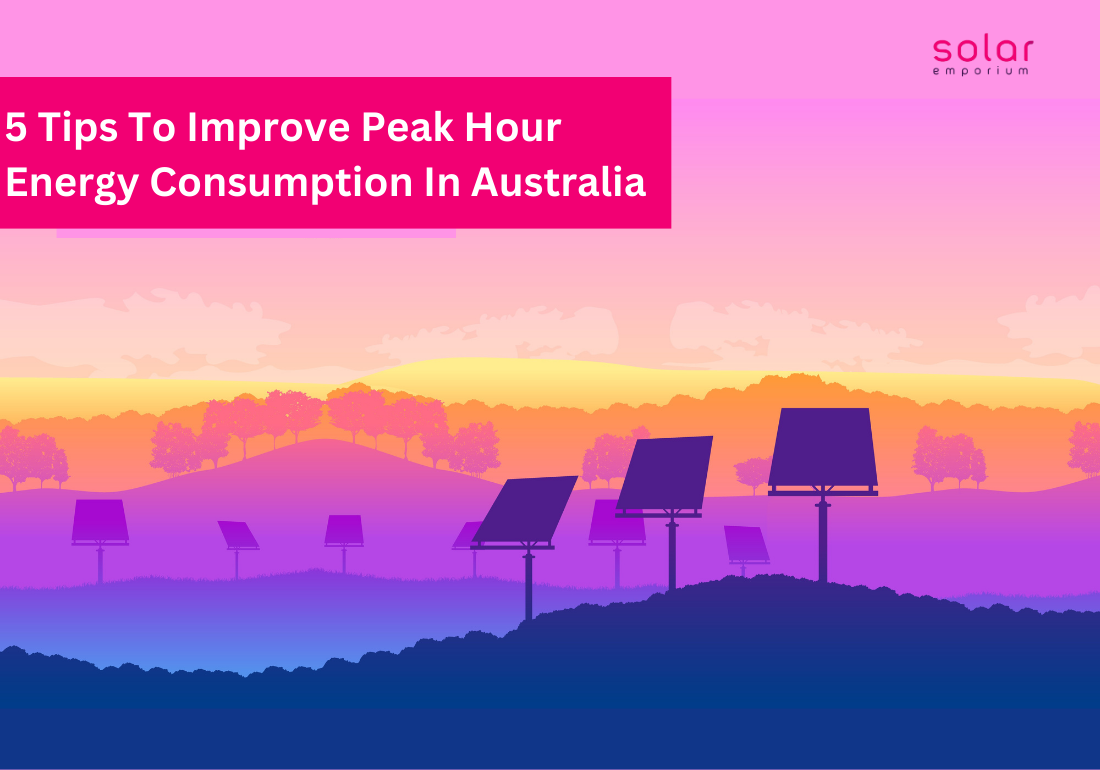Understanding peak electricity times and rates is critical to lowering energy costs. Assuming these times and rates apply to you. This article will provide you with a guide on how you can improve your peak-hour energy consumption.
But before giving you tips to improve peak-hour energy consumption in Australia, let’s talk about peak and off-peak hours.
When it comes to electricity, all the buzzwords need to be clarified. Peak and off-peak are two of the most commonly used buzzwords in the energy market. But these two words can also be very confusing.
Peak and off-peak rates differ in rates and energy plans. But who pays these charges? How do you get a better and more affordable plan? What do these words mean on your power bills or energy plans? Continue reading to find out.
What Are The Peak Electricity Hours?
What Are The Off-Peak Electricity Hours?
Off-peak electricity times are when there is less demand for power on the grid. On weekdays, off-peak times are typically in the late evening and early morning. It usually goes on from 10 pm to 7 am in Australia.
Weekends and the middle of the day are commonly known as shoulder times.

What Does Peak Usage On Your Bill Mean?
Peak usage will appear on most of our electricity bills. But it will mean different things to different customers. It often depends on your energy plan and tariff.
If you have a single rate tariff plan, you pay the same electricity price regardless of the time of day. However, energy retailers continue to refer to these rates as peak usage.
It is only accurate when you have a controlled load. You pay a lower rate for a heat pump or your pool pump.
Paying different electricity prices depends on the time of day if you have a time-of-use tariff. In this case, your bill’s peak usage will reflect the energy used during peak electricity hours.
You can find peak usage information, costs, and all other cost details on your bill, including additional tariffs. In the case of a single-rate tariff, the peak usage reflects all energy usage.
In comparison, those on a time-of-use tariff will see peak usage costs alongside off-peak and shoulder prices and daily supply charges.
Are You Paying Peak or Off-peak Electricity Rates?
If you have a ‘time of use’ or ‘flexible pricing’ tariff, you will only pay peak and off-peak electricity rates. Installing a smart meter on your property will ensure the rates.
You should only be on a time-of-use tariff if you have discussed it with your energy retailer and believe it will be financially beneficial. Sometimes, time-of-use tariffs can be costly if your energy usage habits do not correlate appropriately.
You could easily become confused if you have a single rate tariff and believe you pay different rates for power at other times of the day.
You could have been putting off purchasing household appliances for years for no reason. Most households in Australia are on a single-rate tariff. Contact your energy retailer and check energy bills if you need help determining which tariff you’re on.
Now that we understand peak and off-peak hours, let’s discuss the 5 tips to improve peak-hour consumption in Australia.
Using Off-peak Hours To Improve Energy Consumption
There are numerous ways to save money on electricity by using off-peak rates. But using off-peak hours is the most significant. You can save money by using electricity during off-peak hours.
Use functional and smart appliances like dishwashers, washing machines, and clothes dryers during off-peak hours. Many devices now have timers and smart features. It allows you to control your energy consumption and save money.
Follow Our Tips For Better Energy Usage
Recently Solar Emporium posted many blogs with essential energy-saving tips. Our solar and renewable energy experts perfectly handcraft these tips for your benefit. Some are getting solar panels, buying ceiling fans, and insulating your home.
Check out our blogs, 10 Energy saving tips for Australia, and 14 Ways to improve energy efficiency at home, for a detailed overview of lowering your energy for a lower energy bill.
Recognize Your Meter's Configuration
Knowledgeable consultants can assist you if you require clarification on your meter configuration. You can check your bill under the ‘current charges’ section to see if you are already on off-peak electricity pricing.
Keeping your energy pricing and rates in check will definitely improve your energy consumption. At the least, it can help you become more aware of your usage.
Change Meter Configuration For Off-peak Rates
Be Attentive For Prices Of Peak And Off-peak Electricity
As you might expect, using power during peak hours rather than off-peak hours will result in higher costs – and higher bills.
Peak and off-peak prices differ significantly, so shifting your daily energy usage to off-peak times would be wise if you are on a time-of-use tariff.
However, given the significant price difference, you may need help to defer your energy consumption to off-peak hours.
To make a time-of-use tariff cheaper than a single-rate one, you will likely need to shift around a third of your daily energy needs to off-peak hours.
But how much can you benefit from peak and off-peak hour rates? Let’s find out.
How To Benefit From Peak and Off-peak Electricity Rates?

Peak and off-peak electricity rates can benefit many households. But this is not a generalized scenario. You may have better options if you’re at home and use a lot of electricity in the early evening.
You should reduce your peak time energy usage to get better results. Although, if you are on a single-rate tariff, you will not need to worry about what time of day you use power.
However, if you use a significant portion of your power during the day or late at night, you might be beneficial. Also, if you have a solar battery to store excess solar energy, having cheaper rates during off-peak and shoulder periods may be more helpful.
To be charged different rates during peak and off-peak hours, you must have a smart meter installed on your property and be signed up for a time-of-use or flexible pricing tariff.
Whatever tariff you’re on, it’s always a good idea to compare providers, plans, and prices regularly to avoid paying too much.

